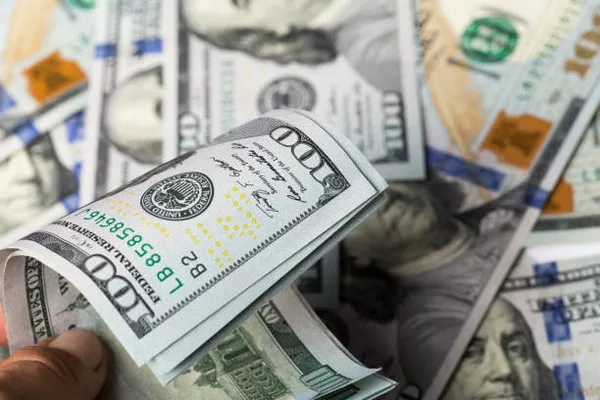Eisenhower dollars hold a unique place in American numismatic history. These distinctive coins were minted to honor the legacy of Dwight D. Eisenhower, the 34th President of the United States and a revered World War II general. However, the journey of these coins, from conception to circulation, is a fascinating tale that involves intricate minting processes, public reception, and eventual distribution. In this article, we delve into the production and circulation of Eisenhower dollars, exploring the quantities minted, their designs, and their impact on numismatics.
The Birth of the Eisenhower Dollar
The Genesis of the Idea
The idea of minting a dollar coin to honor President Eisenhower originated shortly after his death in 1969. As a tribute to his leadership and service to the nation, Congress passed legislation authorizing the minting of these special coins. The coin’s design would feature the likeness of Eisenhower on the obverse, while the reverse would depict the insignia of the Apollo 11 mission, celebrating the successful moon landing.
The Design Process
The responsibility of designing the Eisenhower dollar fell upon Frank Gasparro, the Chief Engraver of the United States Mint at the time. Gasparro meticulously crafted the designs, aiming to capture Eisenhower’s distinguished profile and the monumental achievement of the Apollo 11 mission. His designs were met with widespread acclaim and were subsequently approved for minting.
Minting Process and Quantities Produced
Minting Facilities
The production of Eisenhower dollars took place primarily at the Philadelphia Mint and the Denver Mint. These facilities were equipped with state-of-the-art coinage presses and minting technologies to ensure the precise production of millions of coins.
Quantities Minted
Between 1971 and 1978, the United States Mint minted a total of 282,912,368 Eisenhower dollars for circulation. This figure includes coins minted for general circulation, as well as special collector’s editions and mint sets. The highest production year was 1972, with over 92 million coins minted, while the lowest production year was 1978, with just over 25 million coins minted.
Mint Mark Varieties
Eisenhower dollars minted in Denver bear the “D” mint mark, while those minted in Philadelphia do not have a mint mark. Additionally, in 1973 and 1974, a limited number of Eisenhower dollars were minted in San Francisco as part of special collector sets. These coins are distinguishable by the “S” mint mark.
Distribution and Circulation
Introduction to Circulation
Despite their patriotic designs and historical significance, Eisenhower dollars faced challenges in achieving widespread circulation. Many Americans were accustomed to using paper currency for everyday transactions, and the dollar coin failed to gain widespread acceptance in daily commerce.
Challenges in Circulation
The sheer size and weight of the Eisenhower dollar posed logistical challenges for businesses and consumers alike. Weighing approximately 22.68 grams and measuring 38.1 millimeters in diameter, these coins were significantly larger and heavier than their predecessors, such as the silver dollar or the half dollar.
Limited Circulation
Due to these challenges, Eisenhower dollars saw limited circulation in the United States. While they were initially distributed through banks and financial institutions, their use in everyday transactions remained minimal. As a result, many of these coins were hoarded or used primarily by collectors, rather than circulating widely in commerce.
Legacy and Collectibility
Numismatic Interest
Despite their limited circulation, Eisenhower dollars hold significant numismatic interest among collectors. Their distinctive designs, historical significance, and limited mintages contribute to their appeal as collectible coins.
Collecting Eisenhower Dollars
Collectors often seek out Eisenhower dollars in various conditions, ranging from circulated to uncirculated. Some collectors focus on assembling complete sets, including coins from each year of production and mint mark variety. Others may specialize in acquiring coins with specific mint errors or varieties, adding to the diversity of their collections.
Market Value
The market value of Eisenhower dollars varies depending on factors such as condition, rarity, and demand. While circulated coins are generally more affordable and readily available, coins in pristine uncirculated condition or those with rare mint errors can command higher prices on the numismatic market.
FAQs
Q1: Are Eisenhower dollars still in circulation today?
A1: While Eisenhower dollars are still legal tender in the United States, they are rarely encountered in everyday transactions. Most Eisenhower dollars in circulation today are held by collectors or individuals who have retained them as keepsakes rather than using them for commerce.
Q2: What is the value of a typical Eisenhower dollar?
A2: The value of an Eisenhower dollar depends on factors such as its condition, mint mark, and rarity. Circulated coins are generally valued at or slightly above face value, while uncirculated or collectible specimens can command premiums ranging from a few dollars to several hundred dollars or more.
Q3: Are there any rare varieties or errors associated with Eisenhower dollars?
A3: Yes, there are several notable varieties and errors associated with Eisenhower dollars that can significantly affect their value to collectors. These include doubled dies, repunched mint marks, off-center strikes, and other minting anomalies. Experienced collectors often seek out these rare varieties to add intrigue and value to their collections.
See Also US Dollar: Factors & Implications” href=”https://fxcurrencyconverter.com/archives/50726″>The Strengthening of the US Dollar: Factors & Implications
In conclusion
Eisenhower dollars hold a special place in American numismatic history as a tribute to a revered president and a monumental achievement in space exploration. Despite facing challenges in circulation, these distinctive coins continue to captivate collectors with their historical significance and collectible appeal. Through their designs and mintages, Eisenhower dollars serve as enduring reminders of a bygone era and the indelible legacy of President Dwight D. Eisenhower.


